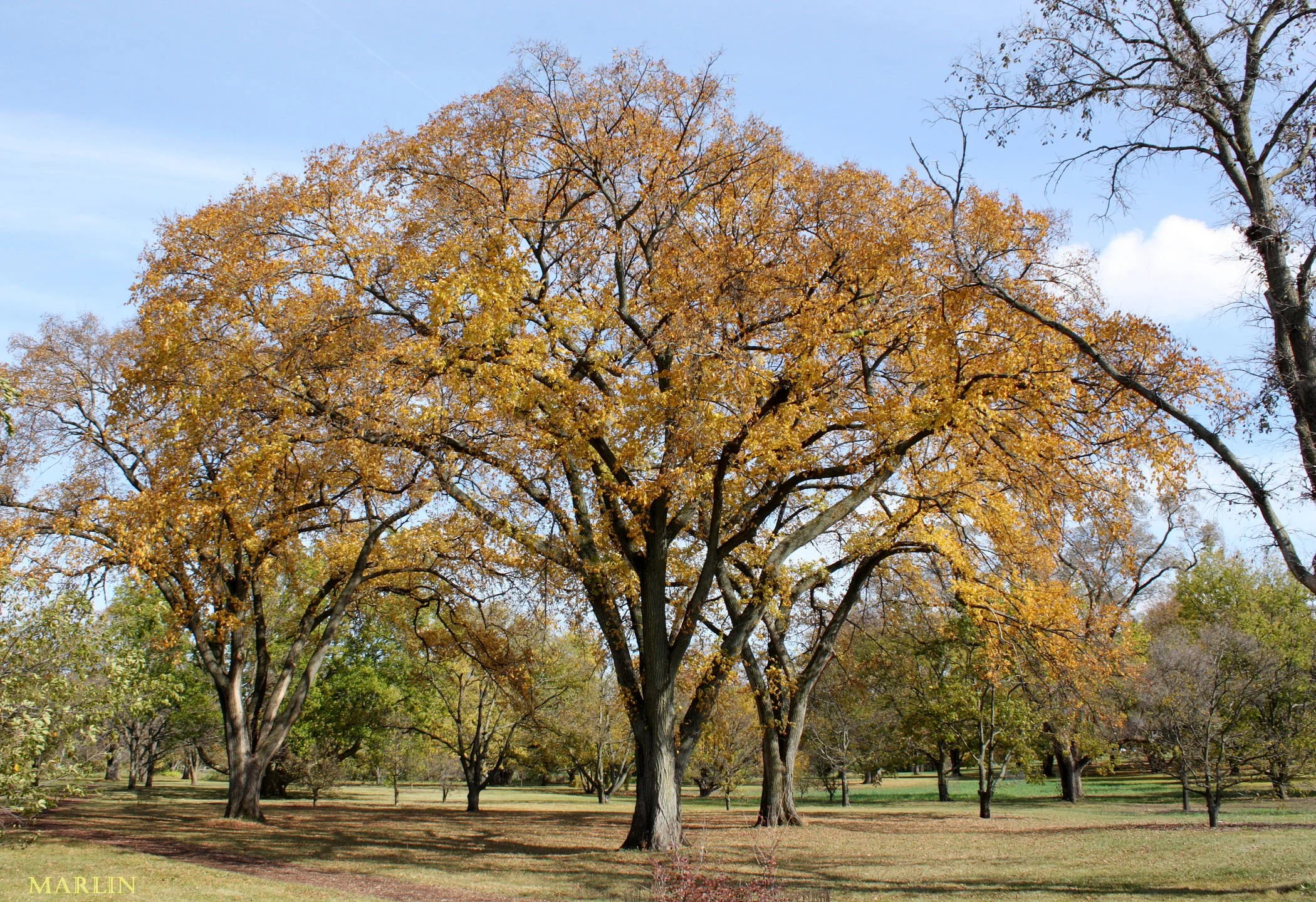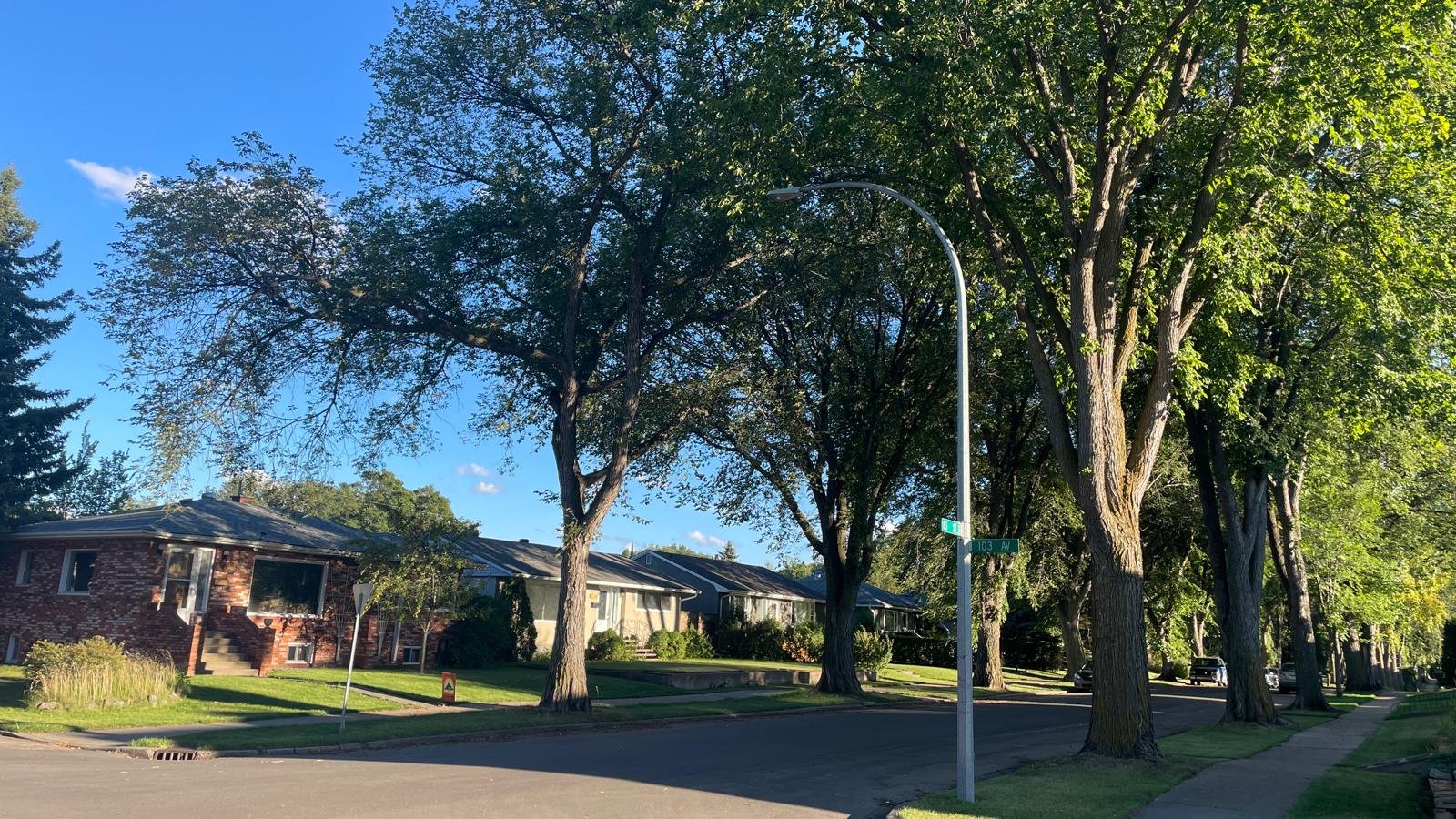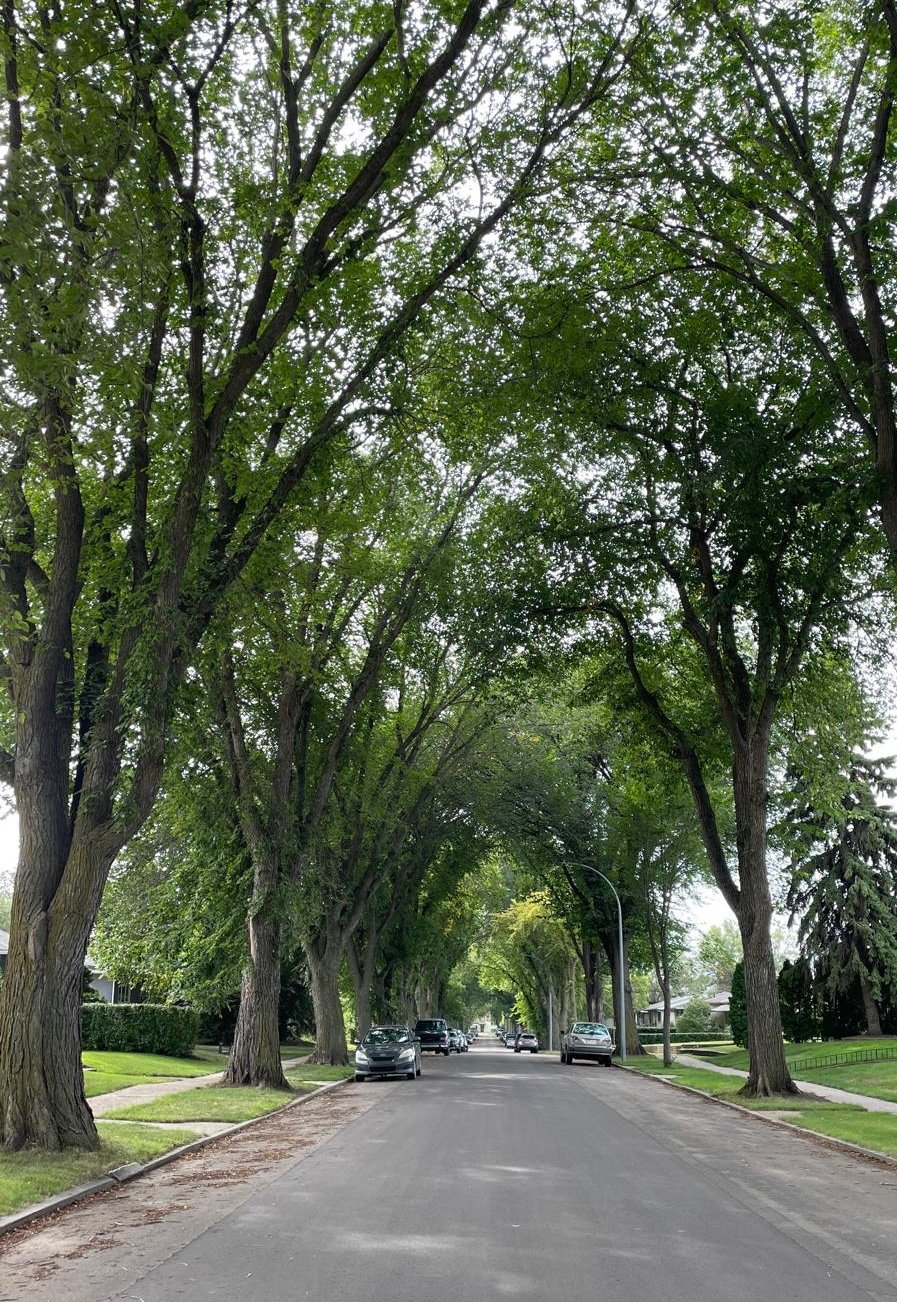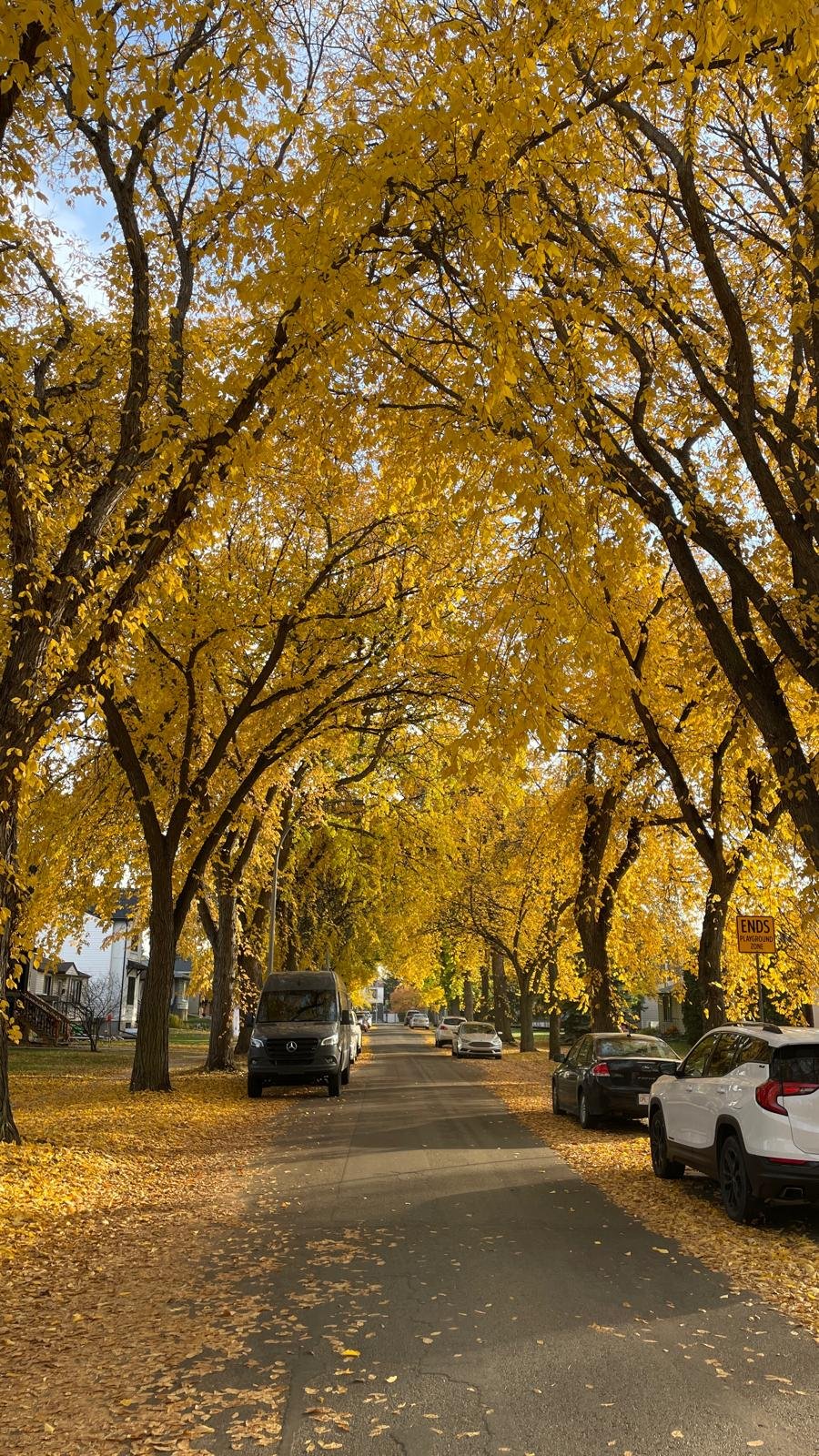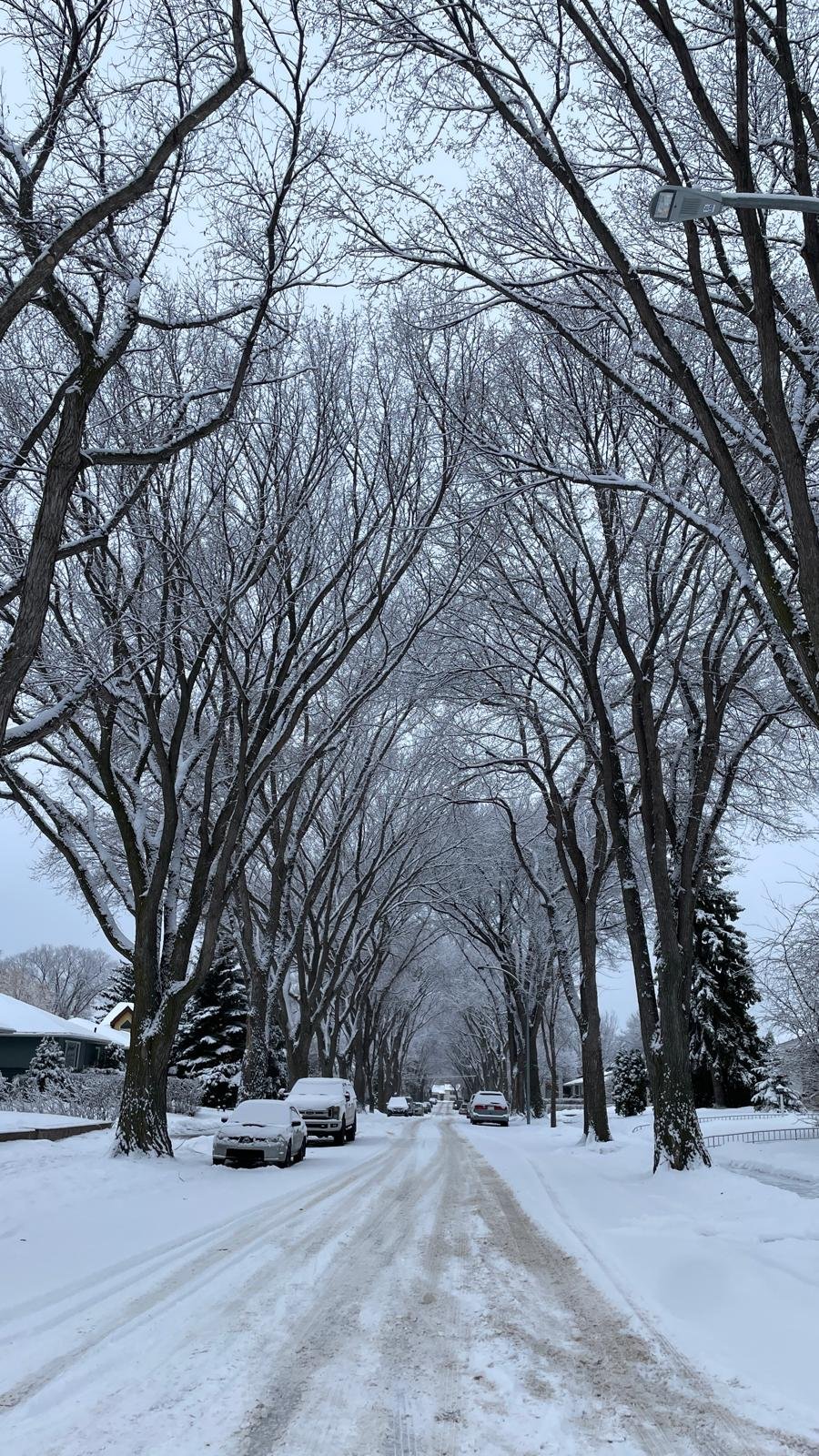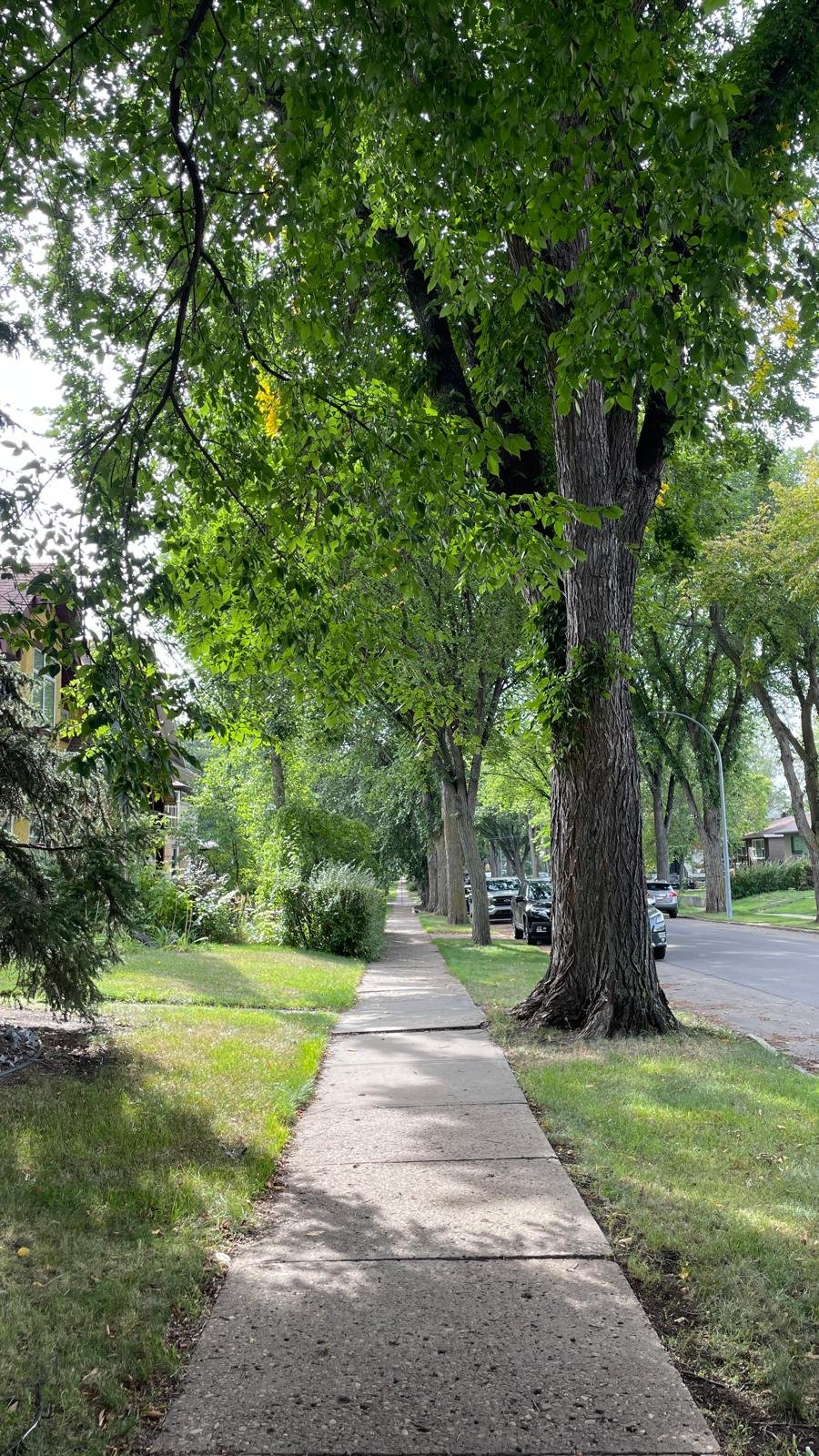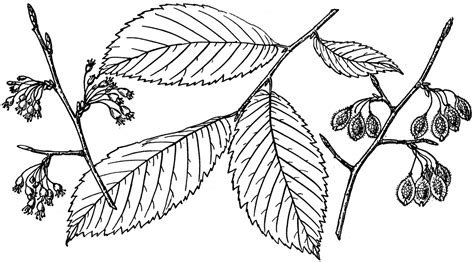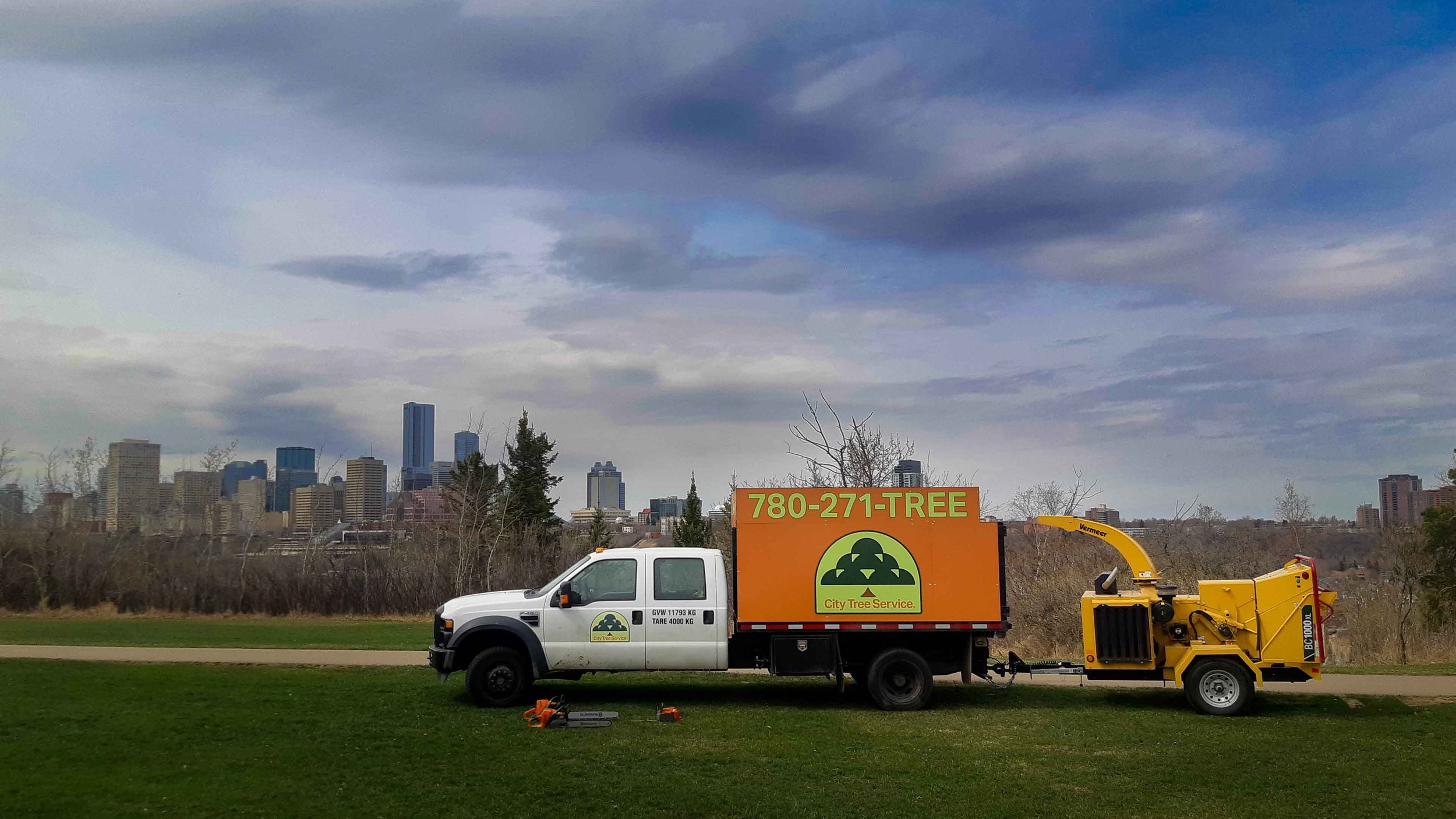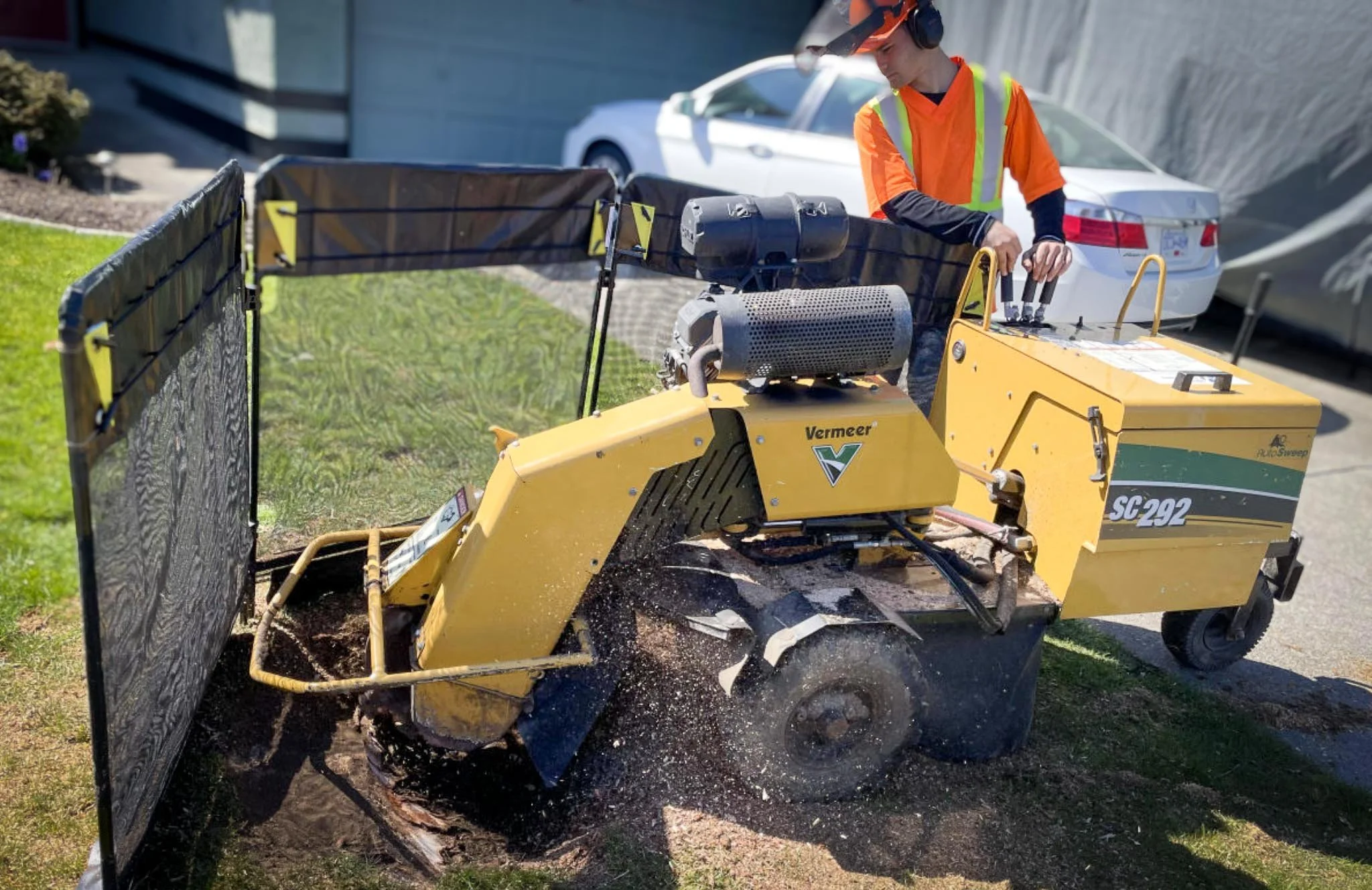Elm Trees in Edmonton
Table of Contents
Introduction
Did you know that Edmonton is home to the world’s largest concentration of mature American elm (Ulmus americana) trees? The city’s boulevard elms, many planted in the early 1900s, have grown into a massive, interconnected urban forest. These trees provide shade, improve air quality, and contribute to the city's character. However, maintaining them requires constant vigilance against Dutch Elm Disease and other pests. This article will help you identify elm trees, describe DED and how to notice it, and we’ll tell you the most important thing you can do for your elms (and any other tree).
How to identify an American elm tree?
Elm trees can be identified from a distance by their shape. It’s often said that elm have are vase-shaped or umbrella shaped. See the photo above for a good example of this overall shape or silhouette.
Below is a photo of elm leaves, flowers, and seeds. Notice the serrated edges on the leaves. The seeds (on the right of the photo) are flat and disc-like. You’ve probably seen them on your windshield if you’ve ever parked below a boulevard elm.
What is Dutch Elm Disease?
Dutch elm disease (DED) is a fungal infection that was introduced to North America around 1940. The disease affects elm species, including the American and Siberian elm, both common in Edmonton. It is spread by elm bark beetles that carry DED spores on their exoskeleton.
According to the most recent inventory in 2017 by the Government of Alberta, Alberta has approximately 600,000 elm trees growing across the province In the past, DED has been found in Alberta (1998 in Wainwright; 2020 in Lethbridge), but fast action to remove and burn infected trees led to successful eradication. DED has been confirmed in Edmonton as of August 2024, which resulted in action to control its spread.
Signs and symptoms
Monitoring the elm trees in your yard and neighbourhood is vital – if you notice any of the signs or symptoms below, you can notify the City of Edmonton by either calling 311 or reporting the case online.
The primary things to look for include:
Drooping, wilting yellow–brown leaves in the summer
Brown wilted leaves that remain on the tree
Branches with smaller leaves than the rest of the tree
Notice the brown and yellow leaves on an otherwise green tree.
The best thing you can do to help your elm tree
Trees are always battling infestations, disease, and other issues. It’s part of being a tree, and as long as the tree’s health is otherwise strong, it can live and even thrive through these problems. However, once a tree is stressed, small problems throughout the canopy can have a much bigger effect. The first step in tree health is to give the tree the best conditions you can. This is mostly achieved by watering (especially during dry spells through the hottest days of summer). You should also ensure the base of the tree is clear of mulch/debris so that rot can’t build up against the trunk.
Another option to help with healthy growth is injecting an organic slow-release fertilizer directly into the root zone. We typically recommend doing a soil test before applying fertilizer, but the fact is that most yards in urban areas are deficient in tree nutrients. However, it’s important to remember that fertilizer can only add new growth: it can’t increase the tree’s defences. We’ll discuss this more in a future blog post.
Lastly, there are tree pesticide injections available that have had success in reducing mortality from DED. While we don’t always recommend pesticide applications, they can be a great tool in some cases.
We’re here to help!
Reach out if you have questions about elms, DED, or tree health in general. Call us at 780-271-TREE (8733) or email us at info@citytree.ca


